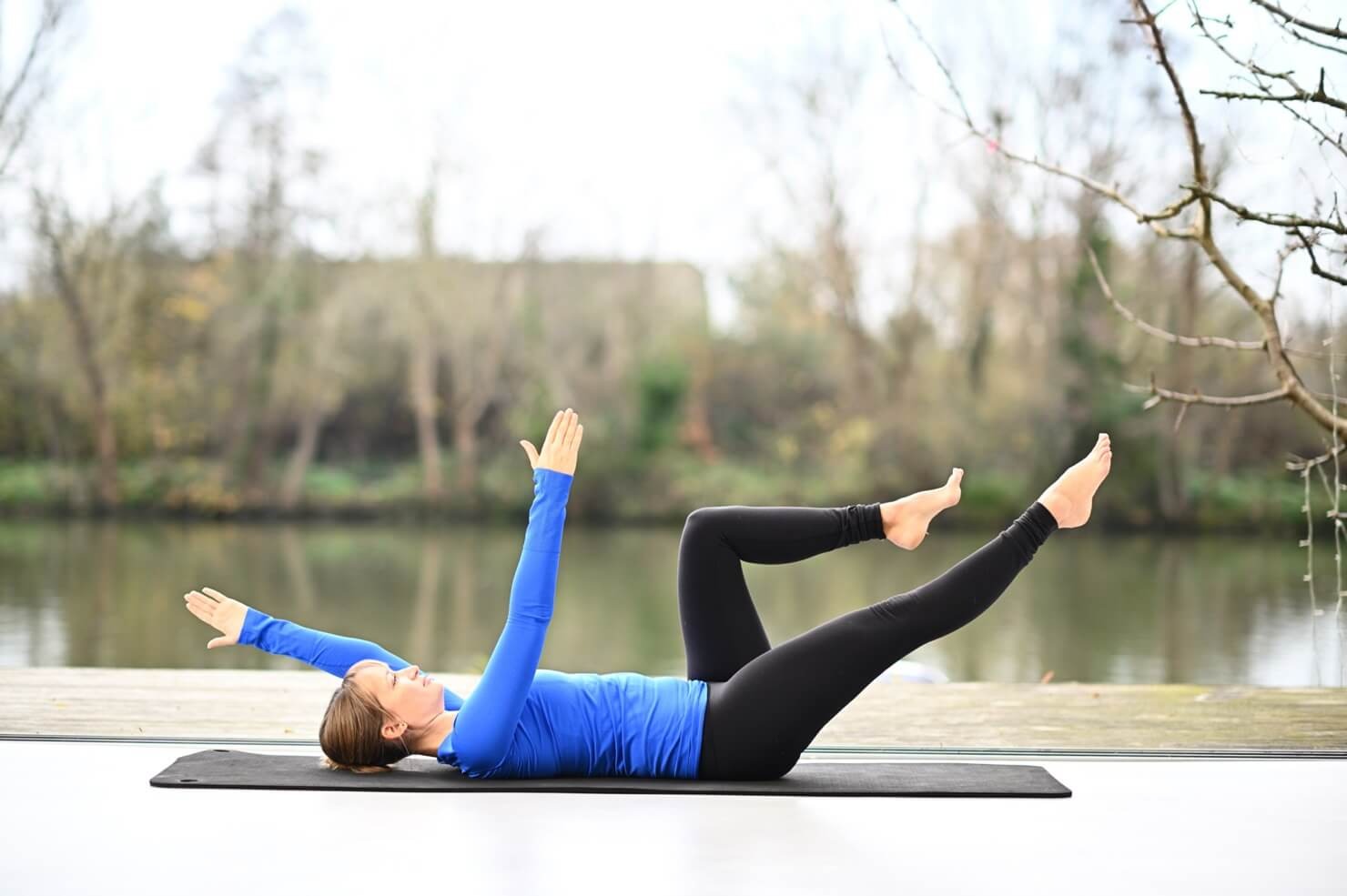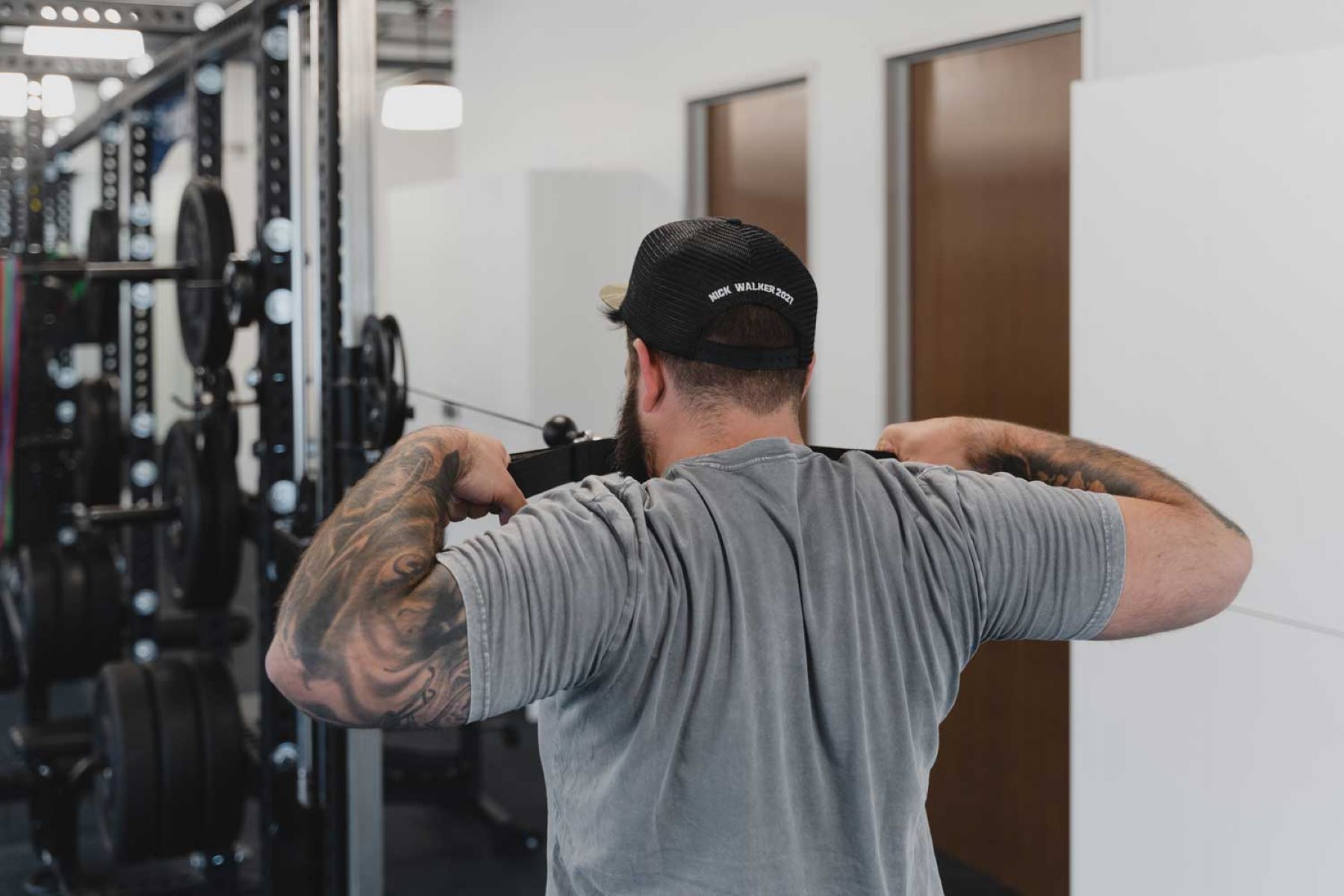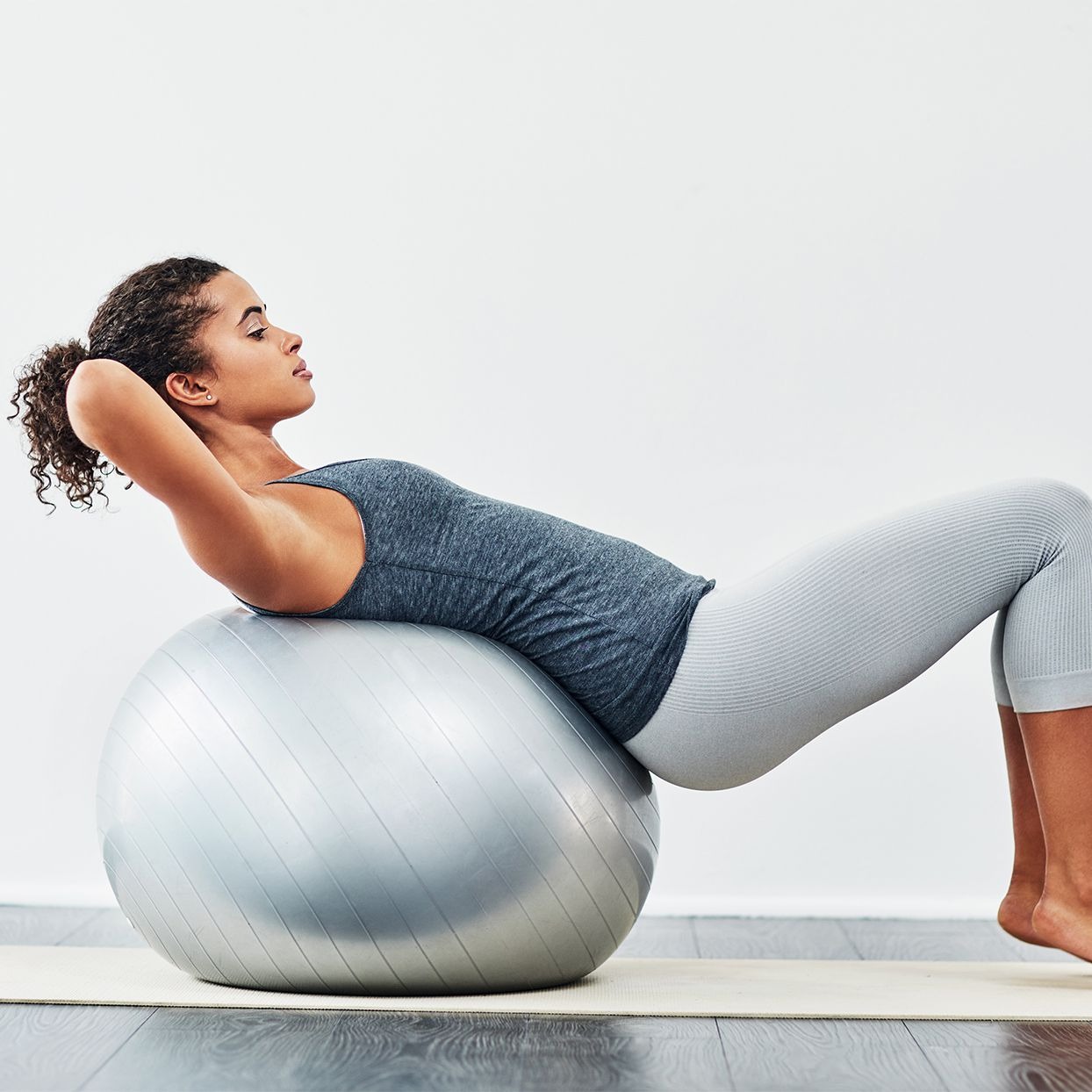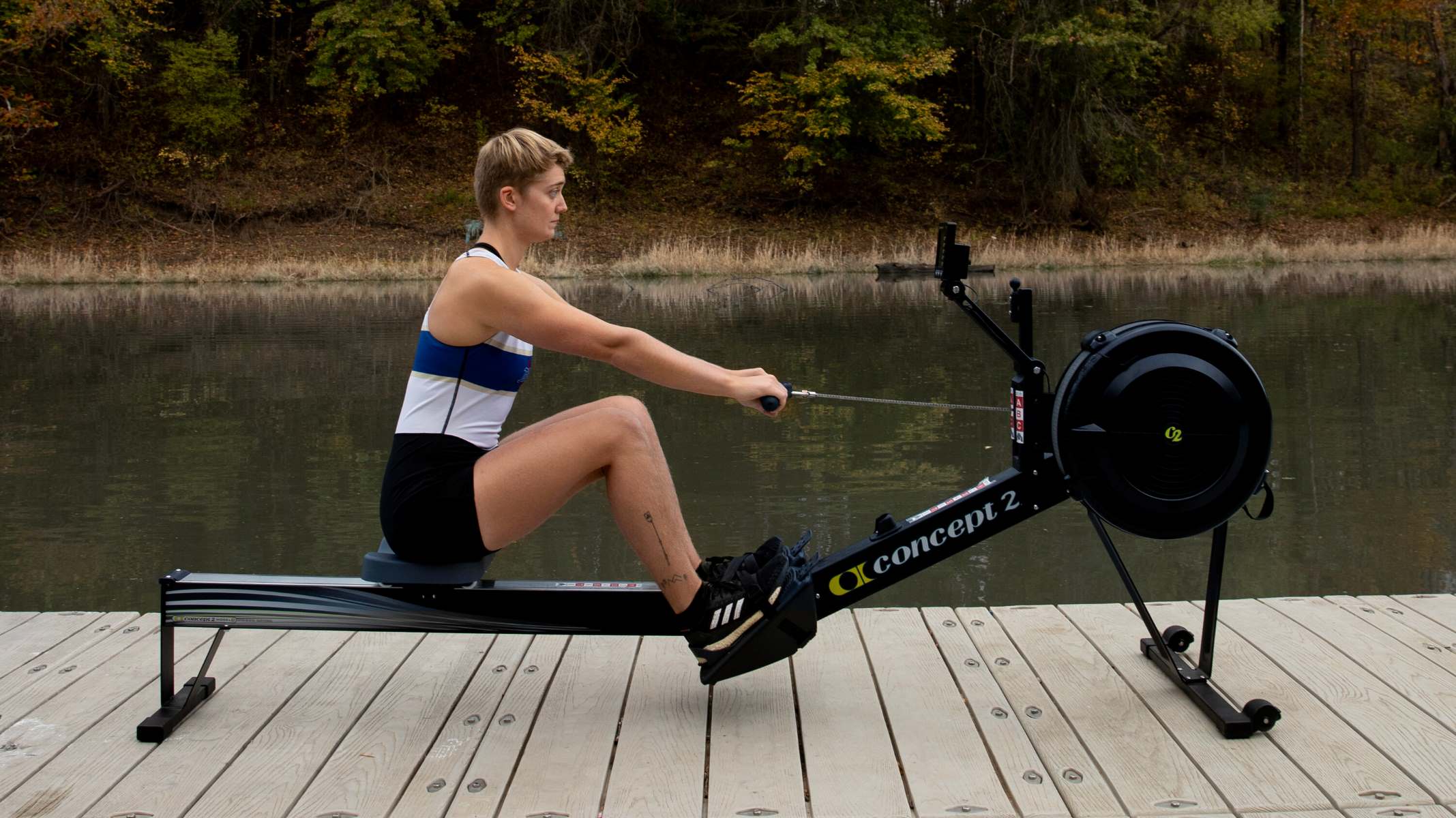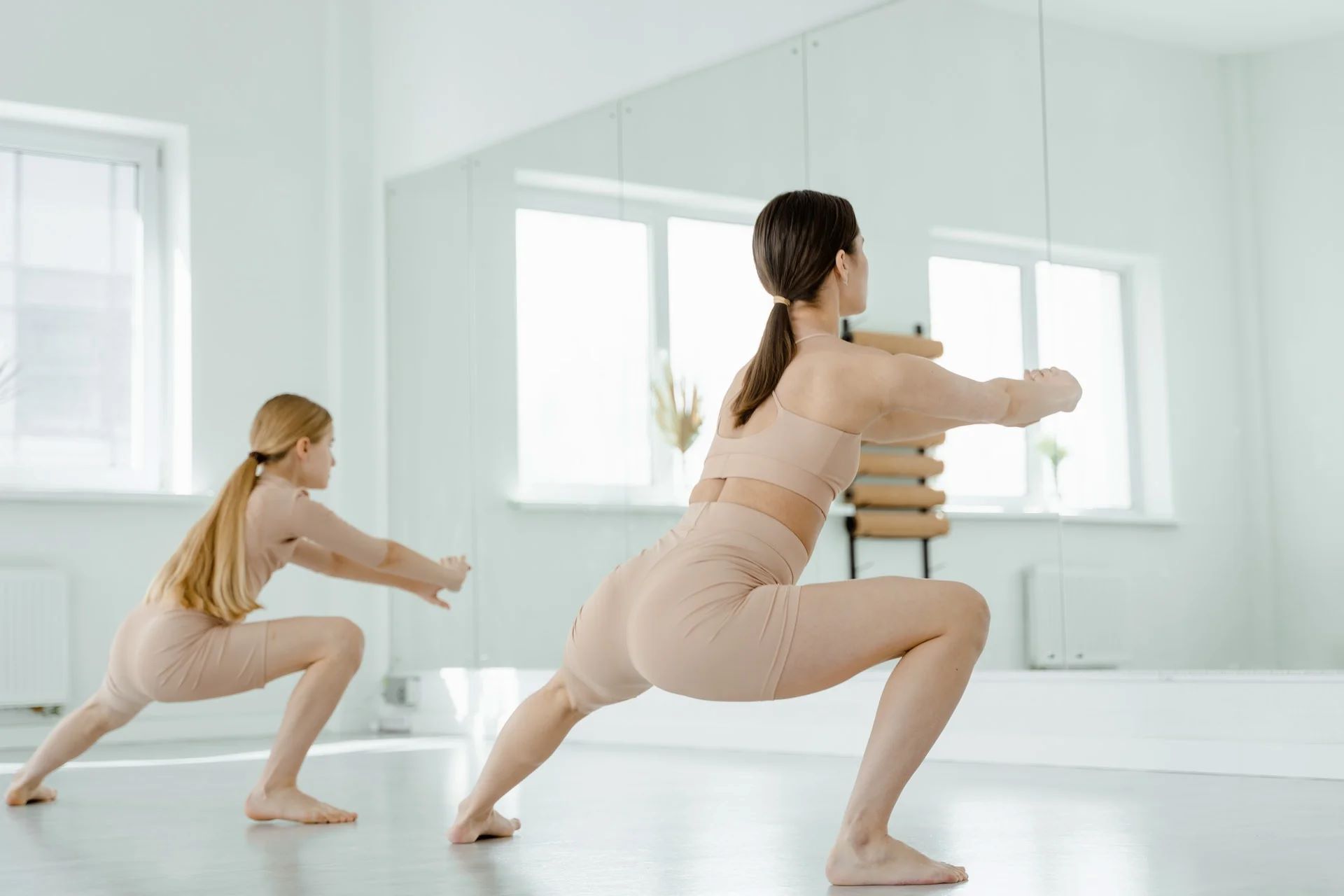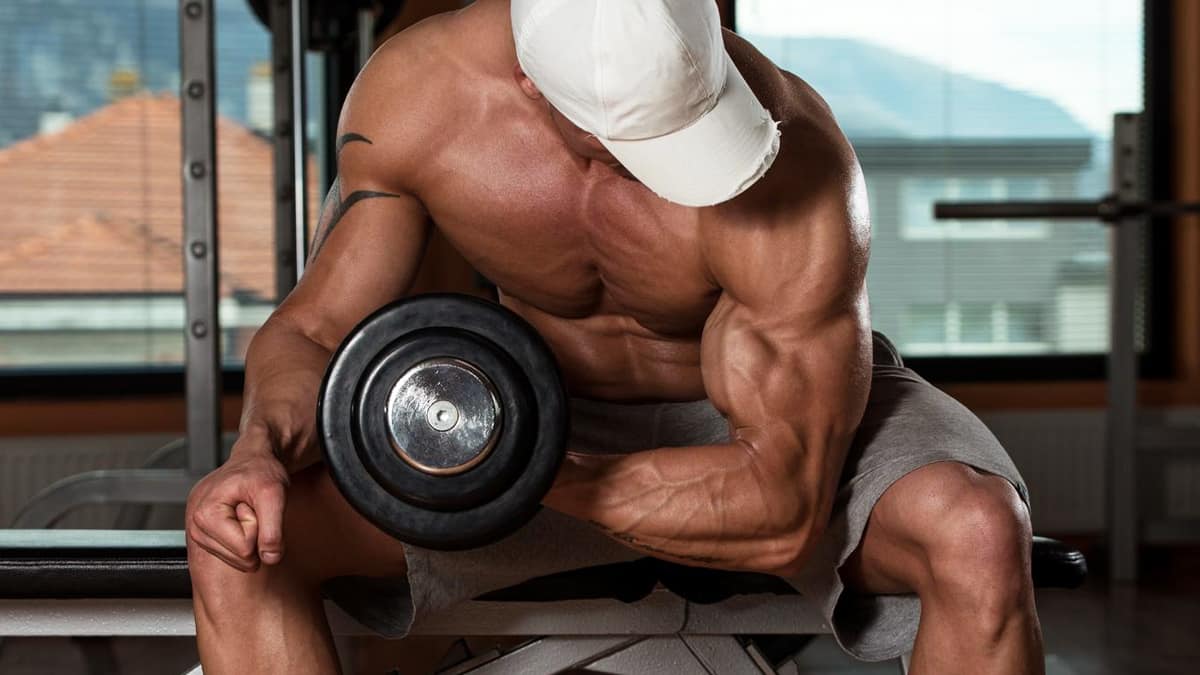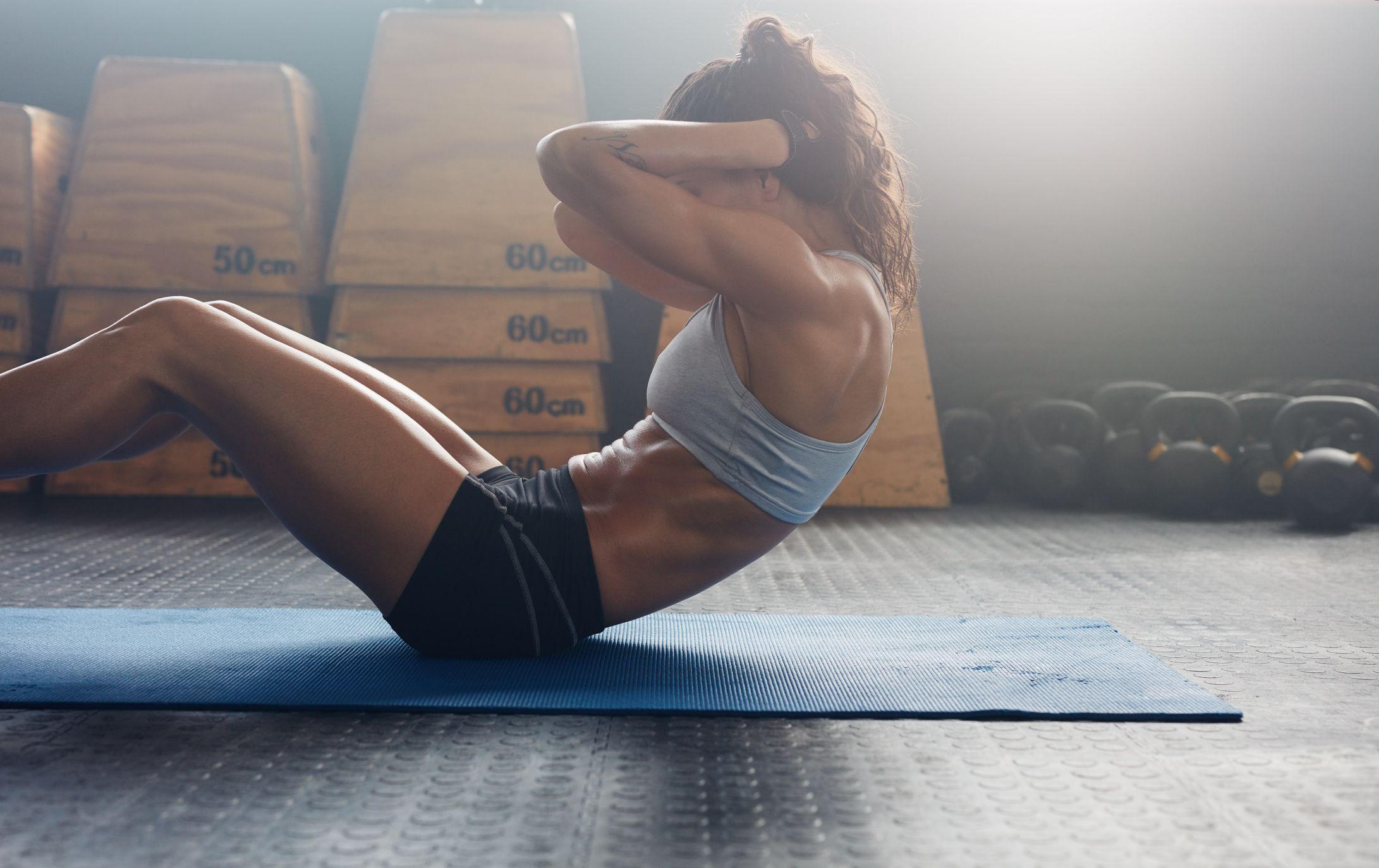

Featured
How To Workout Your Back
Modified: January 2, 2024
Achieve a strong and toned back with our featured workout guide. Learn effective exercises and techniques to target your back muscles for maximum results.
Introduction
Welcome to the world of fitness! If you’re looking to build a strong and well-defined back, you’re in the right place. A strong back not only improves your posture and stability but also enhances your overall physique. Whether you’re a beginner or an experienced fitness enthusiast, incorporating back workouts into your routine is essential for a well-rounded fitness regimen.
Back workouts target the muscles of your upper, mid, and lower back, including the lats, rhomboids, traps, and erector spinae. These muscles play a crucial role in maintaining proper posture, supporting your spine, and assisting in various movements such as pulling, lifting, and twisting.
However, many individuals often overlook back workouts, focusing more on chest and arm exercises. Neglecting the back can lead to muscle imbalances, poor posture, and increased risk of injuries. It’s time to give your back the attention it deserves!
In this article, we will guide you through the importance of back workouts, common mistakes to avoid, warm-up exercises, top back workout exercises, and tips for an effective back workout routine. By following these guidelines, you’ll be on your way to achieving a strong and sculpted back.
Importance of Back Workouts
Back workouts are not only about looking good; they are crucial for overall strength, stability, and functionality. Here are some key reasons why incorporating back workouts into your routine is essential:
- Improved Posture: A strong back helps to maintain proper alignment, preventing the slouching and rounded shoulders commonly associated with weak back muscles. By strengthening the muscles of the upper, mid, and lower back, you can improve your posture and avoid the discomfort and potential health issues that come with poor alignment.
- Reduced Risk of Injuries: Strong back muscles provide stability and support to your spine, reducing the risk of back injuries, strains, and sprains. Back workouts target the deep core muscles, including the erector spinae, which work to protect the spine during movement and lifting.
- Enhanced Performance in Sports and Daily Activities: A strong back is essential for a wide range of activities, whether you’re participating in sports, lifting heavy objects, or engaging in everyday tasks. Your back muscles are involved in pulling, pushing, twisting, and lifting movements, and a well-trained back can improve your overall performance and prevent muscle imbalances.
- Injury Rehabilitation and Prevention: If you’ve experienced a back injury in the past or are currently undergoing rehabilitation, back workouts can help strengthen the surrounding muscles and support the healing process. Additionally, regular back exercises can help prevent further injuries and protect your back in the long run.
- Enhanced Aesthetic Appearance: Let’s not forget the aesthetic benefits of a strong and toned back. Back workouts can give you that desirable V-shaped physique, with a wide and well-defined upper back and a narrow waist. Strong back muscles can complement and enhance your overall physique, making you feel confident and proud of your hard work.
Now that you understand the importance of back workouts, let’s explore some common mistakes to avoid to make the most out of your routine.
Common Mistakes to Avoid
When it comes to back workouts, it’s crucial to perform the exercises correctly to maximize their benefits and prevent injuries. Here are some common mistakes to avoid:
- Using too much weight: It can be tempting to lift heavy weights to prove your strength, but using excessive weight can compromise your form and increase the risk of injury. Start with lighter weights and focus on maintaining proper technique before gradually increasing the load.
- Ignoring proper form: Improper form not only reduces the effectiveness of the exercise but also increases the risk of injury. Ensure that you maintain a neutral spine, engage your core, and avoid jerking or swinging movements. If you’re unsure about the correct form, consider working with a qualified trainer or watching instructional videos to learn proper technique.
- Neglecting warm-up exercises: The back is a complex structure of muscles, and it’s important to warm up properly before engaging in intense back exercises. Dynamic stretches, such as arm swings and shoulder circles, can help activate the muscles and prepare them for the workout.
- Overtraining: While it’s important to challenge your muscles, overtraining can lead to fatigue, reduced performance, and increased risk of injury. Make sure to allow adequate rest and recovery time between back workouts to give your muscles time to repair and grow stronger.
- Not incorporating variety: Just like any other muscle group, the back needs variety in its workout routine to ensure balanced development. Incorporate different exercises that target different areas of the back, such as the upper, mid, and lower back, to achieve a well-rounded and proportionate physique.
By avoiding these common mistakes, you’ll be able to maximize the benefits of your back workouts and minimize the risk of injuries. Now, let’s move on to the next section: warm-up exercises for your back.
Warm-Up Exercises for Back
Before diving into your back workout, it’s essential to warm up your muscles to increase blood flow, flexibility, and prepare them for the upcoming activity. Here are some effective warm-up exercises for your back:
- Arm Circles: Stand with your feet shoulder-width apart. Extend your arms out to the sides, parallel to the floor. Start making small circles with your arms, gradually increasing the size of the circles. Perform 10 circles forward and 10 circles backward to loosen up your shoulder and upper back muscles.
- Cat-Cow Stretch: Get down on all fours, with your hands directly under your shoulders and your knees under your hips. Begin by arching your back upwards, dropping your head, and tucking your tailbone. Then, reverse the movement by dropping your belly towards the floor, lifting your head, and arching your lower back. Repeat this flow for 10-15 repetitions, gently mobilizing your entire spine.
- Child’s Pose: Sit back on your heels and lower your torso forward, reaching your arms out in front of you. Rest your forehead on the floor or a yoga block and breathe deeply, feeling a gentle stretch in your lower back and hips. Stay in this position for 30-60 seconds to release tension in your back muscles.
- Thoracic Rotations: Sit on the floor with your legs crossed. Place one hand on your opposite shoulder and the other hand behind your back. Rotate your upper body towards the hand behind your back, feeling a stretch and gentle twist in your mid-back. Hold for a few seconds, then switch to the other side. Repeat this movement for 10-12 rotations on each side.
- Standing Side Bend: Stand with your feet shoulder-width apart. Place one hand on your hip and reach the opposite arm overhead, leaning to the side. You should feel a gentle stretch along the side of your body and in your lower back. Hold the stretch for 15-20 seconds, then repeat on the other side.
Performing these warm-up exercises for your back will help prepare your muscles for the upcoming workout, increase flexibility, and reduce the risk of injury. Once you’ve completed the warm-up, it’s time to move on to the main part of your back workout routine: the top back exercises.
Top Back Workout Exercises
If you’re looking to strengthen and sculpt your back muscles, incorporating these top back workout exercises into your routine will deliver results. Remember to focus on proper form and gradually increase the intensity as your strength improves. Here are the exercises you should include:
- Deadlifts: Hold a barbell or dumbbells in front of your thighs, with your feet shoulder-width apart. Keeping your back straight and core engaged, hinge at the hips and lower the weights towards the ground. Drive through your heels to lift the weights back up, squeezing your glutes and engaging your back muscles. Deadlifts target the entire posterior chain, including the back muscles, hamstrings, and glutes.
- Bent-Over Rows: Hold a barbell or dumbbells, feet shoulder-width apart, and hinge forward from the hips with a slight bend in your knees. Keep your back straight and pull the weights towards your lower chest by retracting your shoulder blades. Lower the weights with control and repeat for the desired number of reps. Bent-over rows primarily target the muscles of the upper back, including the lats and rhomboids.
- Pull-Ups: Grab the pull-up bar with an overhand grip, hands shoulder-width apart. Hang with your arms fully extended, then pull your body upward until your chin is above the bar. Lower yourself back down with control and repeat. Pull-ups are a challenging exercise that targets the entire upper back and helps improve grip strength.
- Lat Pulldowns: Sit at a lat pulldown machine, grasping the bar with a wide overhand grip. Lean back slightly and pull the bar down towards your chest, squeezing your shoulder blades together. Slowly release the bar back up and repeat. Lat pulldowns target the latissimus dorsi muscles, commonly known as the lats, which are responsible for the V-shaped appearance of the back.
- Seated Cable Rows: Sit at a cable machine with your feet flat on the footrests and grasp the handles. Keep your back straight and pull the handles towards your abdomen while squeezing your shoulder blades together. Slowly extend your arms back out and repeat. Seated cable rows target the middle and lower back muscles, as well as the biceps and forearms.
- Reverse Flyes: Stand with your feet shoulder-width apart and hold a pair of dumbbells in your hands. Bend forward at the hips with a slight bend in your knees. With your palms facing each other, raise your arms out to the sides until they are parallel to the ground, squeezing your shoulder blades together. Slowly lower the weights back down and repeat. Reverse flyes primarily target the muscles of the upper back and help improve posture.
- Superman Exercise: Lie face down on a mat with your arms extended above your head and your legs straight. Lift your upper body and legs off the ground simultaneously, keeping your core engaged and back muscles contracted. Hold this position for a few seconds, then lower yourself back down. Repeat for the desired number of reps. The superman exercise is a bodyweight movement that targets the muscles of the lower back.
- Back Extensions: Lie face down on a back extension bench or stability ball, with your hips resting on the edge. Cross your arms over your chest or place them behind your head. Engage your lower back muscles and lift your upper body until it is in line with your legs. Hold this position for a moment, then lower yourself back down. Back extensions primarily target the erector spinae muscles of the lower back.
These top back workout exercises target different areas of the back and offer a mix of compound movements, isolation exercises, and bodyweight exercises. Incorporate a variety of these exercises into your routine for a well-rounded back workout.
Next, we’ll explore the importance of cooling down and stretching after your back workout.
Deadlifts
Deadlifts are an incredibly effective compound exercise that targets multiple muscle groups, including the back, glutes, hamstrings, and core. They are often referred to as the “king of all exercises” due to their ability to build overall strength and power. Here’s how to perform deadlifts correctly:
- Starting Position: Stand with your feet shoulder-width apart and the barbell or dumbbells on the ground in front of you. Bend your knees and hinge forward at the hips, keeping your back straight and your core engaged. Grasp the barbell with an overhand grip, hands slightly wider than shoulder-width apart.
- Lifting the Weight: Push through your heels, keeping your back straight and lifting the weight by extending your hips and knees. Keep the barbell close to your body as you lift, engaging your back muscles to help with the movement. Continue to rise until you are in a standing position with your hips fully extended.
- Lowering the Weight: Reverse the movement by hinging at the hips and bending your knees to lower the weight back down to the ground. Keep your back straight and control the descent, avoiding any jerking or rounding of the spine.
When performing deadlifts, it’s important to focus on maintaining proper form to prevent injury and maximize the benefits of the exercise. Here are some key tips to keep in mind:
- Engage Your Core: Keep your core muscles tight throughout the movement to provide stability and protect your lower back.
- Keep Your Shoulders Back: Squeeze your shoulder blades together and keep your shoulders pulled back to maintain a neutral spine and prevent rounding of the upper back.
- Push Through Your Heels: As you lift the weight, focus on driving through your heels to engage your glutes and hamstrings effectively.
- Start with Light Weights: If you’re new to deadlifts or unsure of your strength, begin with lighter weights and focus on proper form before progressing to heavier loads.
- Listen to Your Body: Pay attention to how your body feels during the exercise. If you experience any pain or discomfort, stop immediately and consult with a fitness professional or healthcare provider.
Deadlifts are a challenging exercise, but when performed correctly, they can significantly improve your back strength and overall physique. Start with a weight that you can handle with good form and gradually increase the intensity as you get stronger.
Now that you have learned the proper technique for deadlifts, let’s move on to the next back workout exercise: Bent-Over Rows.
Bent-Over Rows
Bent-over rows are a fantastic exercise that primarily targets the muscles of the upper back, including the latissimus dorsi, rhomboids, and rear deltoids. By incorporating bent-over rows into your back workout routine, you can build a strong and well-defined back. Here’s how to perform bent-over rows correctly:
- Starting Position: Stand with your feet shoulder-width apart and hold a barbell or dumbbells in front of your thighs. Hinge forward at the hips, keeping your back straight and your knees slightly bent. Let the weights hang down in front of you, with your arms fully extended.
- Pulling the Weights: Activate your back muscles and squeeze your shoulder blades together as you pull the weights towards your lower chest. Keep your elbows close to your body and focus on pulling through your back, rather than relying solely on your arms.
- Lowering the Weights: Slowly and with control, lower the weights back down to the starting position, fully extending your arms and feeling a stretch in your back muscles.
When performing bent-over rows, it’s important to maintain proper form to maximize the benefits of the exercise while minimizing the risk of injury. Here are some tips to help you perform bent-over rows effectively:
- Keep Your Back Straight: Maintaining a neutral spine is crucial to prevent back strain. Avoid rounding or arching your back and focus on keeping it straight throughout the movement.
- Engage Your Core: Keep your core muscles engaged to provide stability and protect your lower back.
- Avoid Excessive Jerking: Control the movement and avoid using momentum to lift the weights. Focus on a slow and controlled pull, emphasizing the contraction of your back muscles.
- Vary Your Grip Width: Experiment with different grip widths, such as wider or narrower, to target different areas of the upper back. This can help ensure a well-rounded development of your back muscles.
- Use Proper Breathing Technique: Exhale as you pull the weights towards your chest and inhale as you lower them back down. This breathing pattern helps stabilize your core and maintain proper form throughout the exercise.
Bent-over rows are an excellent exercise for strengthening the upper back and improving posture. Remember to start with a weight that allows you to maintain proper form, and gradually increase the intensity as your back muscles get stronger.
With bent-over rows covered, let’s move on to the third exercise in our top back workout list: Pull-Ups.
Pull-Ups
Pull-ups are a challenging and highly effective exercise that targets the muscles of the upper back, including the latissimus dorsi, rhomboids, and biceps. They are a compound movement that requires upper body strength and can greatly improve your back muscles’ overall strength and definition. Here’s how to perform pull-ups correctly:
- Starting Position: Stand in front of a pull-up bar with your palms facing away from you and hands slightly wider than shoulder-width apart. Jump up or use a step to grab the bar with both hands.
- Performing the Pull-Up: Brace your core, engage your back muscles, and begin pulling your body upward until your chin is above the bar. Focus on pulling through your back muscles rather than relying solely on your arms. Hold for a second at the top of the movement, feeling the contraction in your back muscles.
- Lowering Yourself Down: Slowly and with control, lower your body back down to the starting position, fully extending your arms. Avoid swinging or using a bouncing motion to initiate the next rep.
Performing pull-ups correctly can be challenging, especially if you’re a beginner. Here are some tips to help you master the pull-up exercise:
- Practice Proper Grip Strength: Develop your grip strength by performing exercises such as dead hangs or using grip strengtheners. A strong grip is essential for maintaining your hold on the bar during pull-ups.
- Assisted Pull-Up Variations: If you’re unable to perform a full pull-up yet, you can start with assisted variations. Use resistance bands, a pull-up assist machine, or partner-assisted pull-ups to gradually build strength and progress towards unassisted pull-ups.
- Engage Your Core: Keep your core muscles engaged throughout the movement to provide stability and prevent excessive swinging of the body.
- Controlled Movement: Focus on a slow and controlled pull-up to fully engage your back muscles and avoid relying on momentum. This ensures that your muscles are doing the work and that you’re getting the maximum benefit from the exercise.
- Patience and Persistence: Pull-ups can be challenging, but with consistent practice and dedication, you’ll build the strength needed to perform them. Be patient with yourself and celebrate even small progress along the way.
Adding pull-ups to your back workout routine can significantly enhance your upper body strength and overall back development. Start with variations that suit your current fitness level and aim to gradually progress towards unassisted pull-ups.
Now that you’ve learned the correct technique for pull-ups, let’s move on to the next exercise: Lat Pulldowns.
Lat Pulldowns
Lat pulldowns are an excellent exercise for targeting the latissimus dorsi muscles, commonly known as the “lats.” They are a versatile alternative to pull-ups, allowing you to adjust the resistance and effectively strengthen your back muscles. Here’s how to perform lat pulldowns correctly:
- Starting Position: Sit at a lat pulldown machine with your knees secured under the pads and your grip on the bar wider than shoulder-width apart. Ensure that your back is straight and your chest is lifted.
- Pulling the Bar: Engage your lats and biceps as you pull the bar down towards your chest. Focus on squeezing your shoulder blades together at the bottom of the movement to maximize the contraction in your back muscles.
- Returning to Starting Position: Slowly and with control, allow the bar to rise back up to the starting position, fully extending your arms. Avoid using momentum to initiate the next repetition.
Performing lat pulldowns with proper form is crucial for targeting the intended muscles and avoiding injury. Here are some tips to help you perform lat pulldowns effectively:
- Adjust the Weight: Start with a weight that allows you to complete the desired number of reps with good form. Gradually increase the resistance as your back muscles get stronger.
- Maintain Proper Positioning: Keep your chest lifted, shoulders pulled back, and your back straight throughout the movement. Avoid excessive leaning back or using momentum to pull the bar down.
- Focus on the Squeeze: Concentrate on squeezing your shoulder blades together at the bottom of the movement to fully engage your back muscles. This helps to maximize the effectiveness of the exercise.
- Breathe Properly: Exhale as you pull the bar down and inhale as you release it back up. Maintaining proper breathing technique helps stabilize your core and maintain good form.
- Experiment with Grip Variations: Vary your grip width on the bar to target different areas of your back. Using a wider grip emphasizes the lats, while a closer grip engages the middle back muscles.
Lat pulldowns are an excellent addition to your back workout routine, as they isolate and strengthen the lats. By incorporating this exercise into your routine, you can achieve a well-defined and proportionate back.
Now that you’re familiar with lat pulldowns, let’s move on to the next exercise: Seated Cable Rows.
Seated Cable Rows
Seated cable rows are a versatile exercise that targets multiple muscles in the back, including the latissimus dorsi, rhomboids, and middle trapezius. This exercise provides a great opportunity to increase back strength, muscular endurance, and overall back development. Here’s how to perform seated cable rows correctly:
- Starting Position: Sit at a cable row machine with your feet flat on the footrests and your knees slightly bent. Grab the handles with an overhand grip and sit up tall, ensuring that your back is straight.
- Pulling the Handles: Begin the movement by pulling the handles towards your abdomen while squeezing your shoulder blades together. Keep your elbows close to your body and focus on pulling through your back muscles rather than relying solely on your arms.
- Returning to Starting Position: Slowly extend your arms back out, fully stretching your back muscles. Maintain control throughout the movement and avoid using momentum to initiate the next repetition.
Executing the seated cable rows with proper form is crucial for targeting the desired muscles and optimizing results. Here are some tips to help you perform seated cable rows effectively:
- Adjust the Weight: Use a weight that challenges your back muscles but allows you to perform the exercise with good form. Gradually increase the resistance as your strength improves.
- Maintain Proper Posture: Sit up tall and avoid slouching. Keep your chest lifted, shoulders pulled back, and your back straight throughout the movement. Engage your core to provide stability.
- Focus on the Squeeze: Emphasize squeezing your shoulder blades together at the end of each repetition to fully engage your back muscles. This helps to promote muscle activation and development.
- Breathe Properly: Exhale as you pull the handles towards your abdomen and inhale as you release them back out. Consistent and controlled breathing helps maintain stability and proper form.
- Vary Your Grip: Experiment with different grip widths, such as narrow, wide, or neutral grip, to target different areas of your back and create variation in your workout routine.
Seated cable rows provide a highly effective way to strengthen and develop the muscles of your back. By incorporating this exercise into your routine, you can target both the upper and middle back, leading to improved posture, stability, and overall back aesthetics.
Now that you’re familiar with seated cable rows, let’s move on to the next exercise: Reverse Flyes.
Reverse Flyes
Reverse flyes are an effective exercise for targeting the muscles of the upper back, including the rear deltoids, rhomboids, and mid-trapezius. By incorporating reverse flyes into your back workout routine, you can improve your posture, strengthen the muscles in your upper back, and enhance the overall aesthetics of your back. Here’s how to perform reverse flyes correctly:
- Starting Position: Stand with your feet shoulder-width apart and hold a pair of dumbbells in your hands. Bend forward at the hips with a slight bend in your knees. Allow your arms and the dumbbells to hang down in front of you, palms facing each other, with a slight bend in your elbows.
- Performing the Movement: Keeping your back straight and core engaged, raise your arms out to the sides until they are parallel to the ground. Focus on squeezing your shoulder blades together at the end of the movement to engage your upper back muscles.
- Returning to Starting Position: Slowly lower the dumbbells back down to the starting position with control, feeling a stretch in your upper back muscles. Avoid using momentum and maintain proper form throughout the exercise.
Executing reverse flyes with proper form is essential to target the intended muscles and prevent unnecessary strain. Here are some tips to help you perform reverse flyes effectively:
- Choose Appropriate Dumbbell Weights: Select dumbbells that allow you to perform the exercise with proper form and without excessive swinging or straining. Gradually increase the weights as your strength improves.
- Maintain Proper Posture: Keep your back straight, chest lifted, and shoulders pulled back throughout the exercise. Engage your core for stability and to avoid any excessive leaning or rounding of the back.
- Focus on the Squeeze: Emphasize squeezing your shoulder blades together as you raise your arms, focusing on engaging the muscles in your upper back. This helps maximize the effectiveness of the exercise.
- Controlled Movement: Perform the exercise in a slow and controlled manner, avoiding any jerking or swinging of the weights. This allows you to maintain tension in the target muscles and prevents injury.
- Vary Your Arm Position: Try performing reverse flyes with your palms facing down or with a neutral grip. This variation can target different areas of the upper back and add variety to your routine.
By incorporating reverse flyes into your back workout routine, you can enhance the development of your upper back muscles and improve posture. Remember to start with lighter weights and gradually increase the resistance as you become more comfortable and stronger with the exercise.
Now that you’re familiar with reverse flyes, let’s move on to the next exercise: Superman Exercise.
Superman Exercise
The Superman exercise is a bodyweight movement that primarily targets the muscles of the lower back, including the erector spinae. It is a great exercise for improving spinal stability, strengthening the posterior chain, and enhancing overall back strength. Here’s how to perform the Superman exercise correctly:
- Starting Position: Lie face down on a mat with your arms extended in front of you and your legs straight. Ensure that your neck is neutral and your gaze is towards the floor.
- Performing the Movement: Simultaneously lift your upper body and legs off the ground, aiming to create a slight arch in your back. Keep your core engaged throughout the exercise and avoid straining your neck.
- Hold for a Moment: Hold the lifted position for a couple of seconds, feeling the contraction in your back muscles and maintaining control of the movement.
- Lowering Yourself Down: Slowly lower your upper body and legs back down to the starting position, allowing your muscles to fully stretch and relax.
Executing the Superman exercise with proper form is essential to target the intended muscles and prevent unnecessary strain. Here are some tips to help you perform the Superman exercise effectively:
- Engage Your Core: Activate your core muscles throughout the exercise to provide stability and support for your lower back.
- Avoid Straining Your Neck: Keep your neck in a neutral position to avoid excessive strain. Look towards the floor rather than lifting your head too high.
- Focus on Posterior Chain Activation: Imagine lifting from your lower back and using your glutes and back muscles to raise your upper body and legs. This ensures that you’re targeting the intended muscles and not relying on momentum.
- Controlled Movement: Perform the exercise in a slow and controlled manner, avoiding any jerking or sudden movements. This allows you to maintain tension in your lower back muscles throughout the exercise.
- Modify Intensity: If you find the exercise too challenging initially, you can modify it by lifting one limb at a time (alternating arm and leg) until you build enough strength and stability for the full Superman exercise.
The Superman exercise is a beneficial addition to your back workout routine, as it targets the often-neglected muscles of the lower back. By incorporating this exercise, you can improve spinal stability, enhance core strength, and promote a well-rounded back.
Now that you’re familiar with the Superman exercise, let’s move on to the next exercise: Back Extensions.
Back Extensions
Back extensions, also known as hyperextensions, are a powerful exercise for targeting the muscles of the lower back, including the erector spinae muscles. By incorporating back extensions into your routine, you can strengthen your posterior chain, improve spinal alignment, and enhance overall back strength. Here’s how to perform back extensions correctly:
- Starting Position: Lie face down on a back extension bench or stability ball, with your hips resting on the edge and your feet anchored securely. Cross your arms over your chest or place them behind your head.
- Performing the Movement: Engage your lower back muscles and lift your upper body until it is in line with your legs. Keep your core engaged and avoid using momentum to perform the movement.
- Hold for a Moment: Hold the lifted position for a couple of seconds, feeling the contraction in your lower back muscles and maintaining control of the movement.
- Lowering Yourself Down: Slowly lower your upper body back down to the starting position, allowing your muscles to fully stretch and relax.
Executing back extensions with proper form is crucial to target the intended muscles and prevent unnecessary strain. Here are some tips to help you perform back extensions effectively:
- Maintain Proper Alignment: Keep your body in a straight line throughout the exercise, ensuring your back remains neutral and your gaze is towards the floor.
- Engage Your Core: Activate your core muscles throughout the exercise to provide stability and support for your lower back.
- Controlled Movement: Perform the exercise in a slow and controlled manner, avoiding any sudden movements or jerking. This allows you to maintain tension in your lower back muscles and prevent unnecessary strain.
- Breathing: Inhale as you lower yourself down and exhale as you lift your upper body. Consistent and controlled breathing helps maintain stability and allows for optimal muscle engagement.
- Adjusting Bench Height: Depending on your fitness level and flexibility, you may need to adjust the height of the back extension bench or the size of the stability ball to ensure proper alignment and range of motion.
Back extensions are a valuable exercise for improving lower back strength, spinal stability, and overall back health. Remember to start with a comfortable range of motion and gradually increase the difficulty as your back muscles grow stronger.
Now that you’re familiar with back extensions, let’s move on to the cool-down and stretching segment of your back workout routine.
Cool Down and Stretching
After a rigorous back workout, it’s essential to dedicate time to properly cool down and stretch your muscles. Not only does this help prevent post-workout stiffness and soreness, but it also promotes flexibility and aids in the recovery process. Here’s a suggested cool-down routine for your back:
- Walk or Jog: Begin with a brief walk or jog to gradually lower your heart rate and bring your body temperature down.
- Full-Body Static Stretches: Perform a series of static stretches that target multiple muscle groups, including your back. Some effective back stretches include the standing forward bend, cat-cow stretch, and child’s pose.
- Child’s Pose: Sit back on your heels and lower your torso forward, reaching your arms out in front of you. Rest your forehead on the floor or a yoga block and breathe deeply, feeling a gentle stretch in your lower back and hips.
- Standing Forward Bend: Stand with your feet hip-width apart and slowly lower your upper body towards the floor, bending at the hips. Allow your back to round naturally and let your arms hang freely. Feel the stretch in your hamstrings and lower back.
- Cat-Cow Stretch: Get down on all fours, with your hands directly under your shoulders and your knees under your hips. Arch your back upwards, dropping your head and tucking your tailbone. Then, reverse the movement by dropping your belly towards the floor, lifting your head, and arching your lower back.
- Hold Each Stretch: Hold each stretch for 15-30 seconds, breathing deeply and allowing your muscles to relax. Avoid bouncing or forcing the stretch beyond your comfort level.
- Deep Breathing and Relaxation: Take a few moments to focus on deep breathing and allow your body and mind to relax. This helps promote recovery and reduces post-workout tension.
Cooling down and stretching your muscles after a back workout is vital for preventing muscle tightness and promoting flexibility. It allows your body to transition from exercise to a state of rest and recovery. Make sure to dedicate at least 10-15 minutes to this cooling-down routine to reap its benefits fully.
Now that you understand the importance of cooling down and stretching, let’s move on to some essential tips for making your back workouts more effective.
Tips for Effective Back Workouts
To ensure that you get the most out of your back workouts and maximize your results, here are some useful tips to incorporate into your routine:
- Focus on Proper Form: Maintaining proper form throughout your back exercises is crucial for targeting the intended muscles and preventing injuries. Take the time to learn and practice correct technique, and never sacrifice form for heavier weights.
- Vary Your Exercises: Aim to include a variety of back exercises in your routine to target different muscle groups and achieve a well-rounded development. Mix up your workouts by incorporating compound movements, isolation exercises, and bodyweight exercises.
- Gradually Increase Intensity: As your strength improves, gradually increase the intensity of your back workouts by adding resistance or progressing to more challenging variations of the exercises. This progressive overload will help stimulate muscle growth and prevent plateauing.
- Include Rest Days: Give your back muscles ample time to rest and recover between workouts. Overworking the muscles without proper recovery can lead to fatigue, decreased performance, and increased risk of injury. Aim for at least one or two days of rest per week.
- Engage Your Core: Keep your core muscles engaged throughout your back exercises to provide stability and protect your spine. This not only improves your overall form but also enhances the effectiveness of the exercises.
- Pair Back Exercises with Other Muscle Groups: A well-rounded workout routine includes exercises for multiple muscle groups. Consider pairing your back exercises with exercises that target other parts of your body, such as the chest, shoulders, or legs, to achieve a balanced workout.
- Listen to Your Body: Pay attention to your body’s signals and adjust your workout intensity accordingly. If you experience pain or discomfort, modify the exercise or consult with a fitness professional or healthcare provider.
- Maintain Consistency: Consistency is key when it comes to seeing progress in your back muscles. Aim to incorporate back workouts consistently into your routine, whether it’s once or twice a week, to ensure steady improvements.
- Warm Up and Cool Down: Always start your back workouts with a proper warm-up to prepare your muscles and joints for the exercises. Similarly, cool down afterward with stretching to promote flexibility and aid recovery.
- Stay Hydrated: Proper hydration is essential for muscle function and overall performance. Drink water before, during, and after your workouts to stay hydrated and support optimal muscle functioning.
By following these tips, you can make your back workouts more effective and efficient. Remember to always prioritize form, adjust the intensity to your abilities, and listen to your body to avoid injury and achieve the best results.
Now that you have a collection of valuable tips, you’re well-equipped to take your back workouts to the next level.
Conclusion
Congratulations! You’ve now gained a comprehensive understanding of back workouts and how to maximize their effectiveness. By incorporating these exercises and following the tips provided, you can build a strong, well-defined, and functional back.
Remember, a strong back is not only aesthetically appealing but also essential for proper posture, spinal health, and overall strength. Neglecting back workouts can lead to imbalances, poor posture, and increased risk of injuries. By focusing on correct form, gradually increasing intensity, and including a variety of exercises, you can develop a balanced and powerful back.
Don’t forget the importance of warming up, cooling down, and stretching to optimize your performance and prevent injury. Taking care of your body through proper hydration, rest, and listening to its signals is crucial for long-term success.
So, whether you’re a beginner starting your fitness journey or an experienced gym-goer looking for new challenges, commit to incorporating these back workouts into your routine and make the necessary adjustments as your strength and abilities grow.
Now it’s time to put your knowledge into action! Prepare to transform your back and unleash the full potential of your fitness journey. Get ready to stand tall, confident, and proud of your sculpted and strong back!
